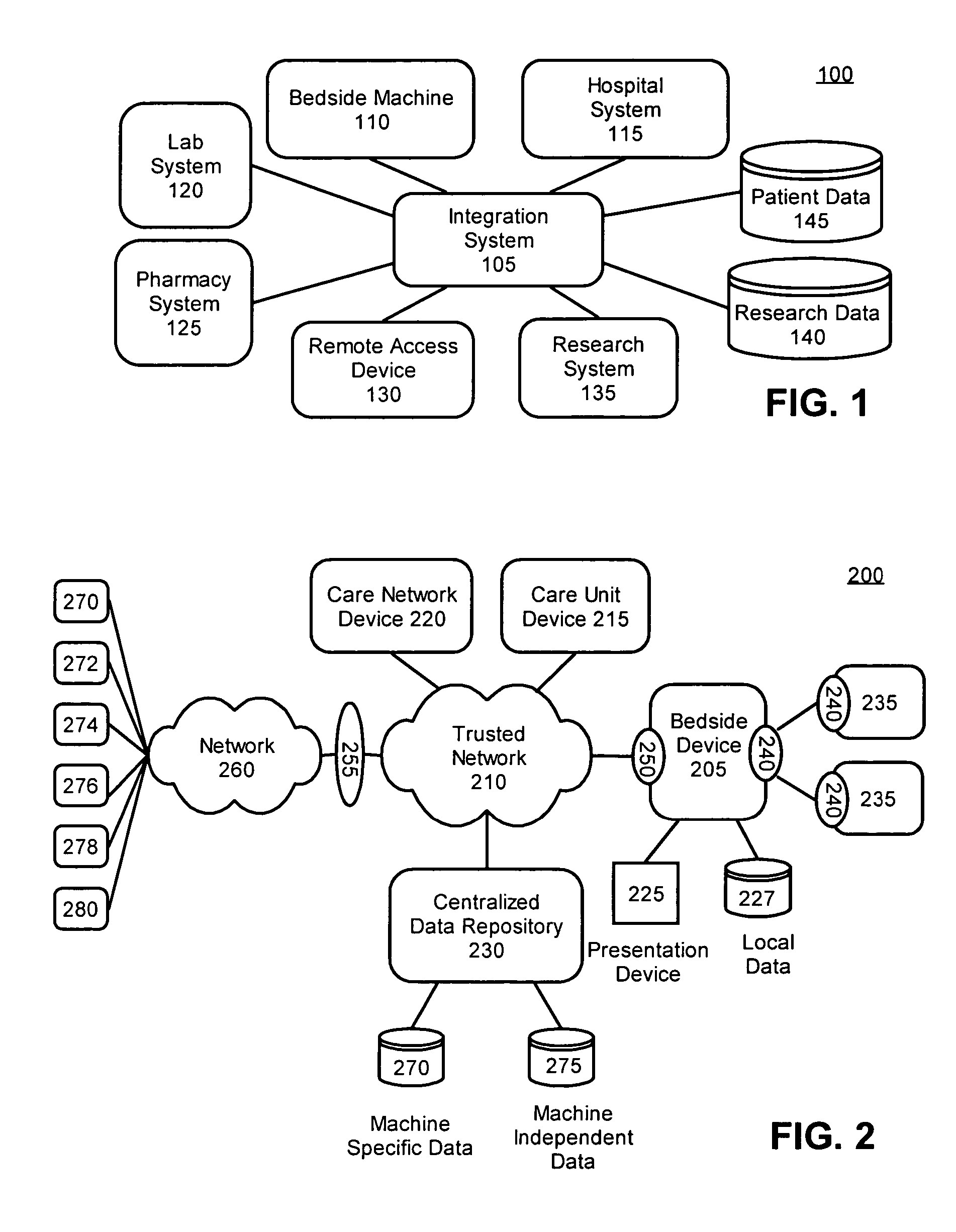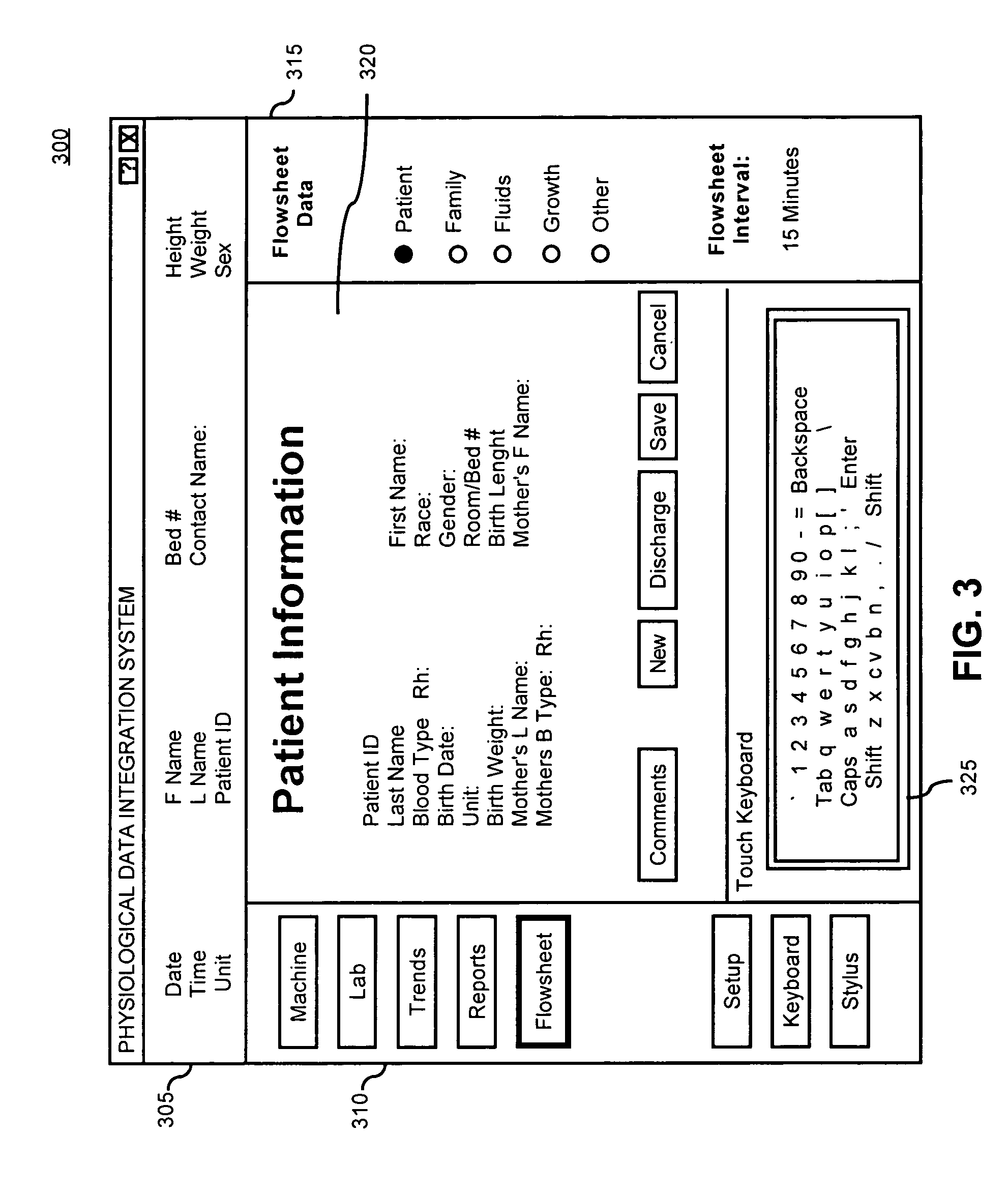Managing critical care physiologic data using data synthesis technology (DST)
a data synthesis and critical care technology, applied in the field of health care, can solve the problems of high problems in managing physiologic data, improper treatment, time-consuming and expensive practice of recording and storing physiologic data on paper, etc., and achieve the effect of facilitating data exchang
- Summary
- Abstract
- Description
- Claims
- Application Information
AI Technical Summary
Benefits of technology
Problems solved by technology
Method used
Image
Examples
Embodiment Construction
[0024]The invention disclosed herein provides a method, system and an apparatus for integrating physiologic data, which can be generically referred to as providing physiologic data using data synthesis technology (DST). More particularly, data streams can be conveyed between bedside machines that monitor physiologic data and a computing device communicatively linked to a network. The computing device can interpret the data streams sent from specified machines and transport the information contained within the data streams to a networked element. This networked element can transform the information into a machine-independent data schema. The information provided by bedside machines and other patient relative information, such as pharmacological data and laboratory results can be integrated within a single presentation device. For example, a bedside computing device can contain physiologic, laboratory, pharmacy, and other patient-centric data for a given patient. Additionally, physiol...
PUM
 Login to View More
Login to View More Abstract
Description
Claims
Application Information
 Login to View More
Login to View More - R&D
- Intellectual Property
- Life Sciences
- Materials
- Tech Scout
- Unparalleled Data Quality
- Higher Quality Content
- 60% Fewer Hallucinations
Browse by: Latest US Patents, China's latest patents, Technical Efficacy Thesaurus, Application Domain, Technology Topic, Popular Technical Reports.
© 2025 PatSnap. All rights reserved.Legal|Privacy policy|Modern Slavery Act Transparency Statement|Sitemap|About US| Contact US: help@patsnap.com



